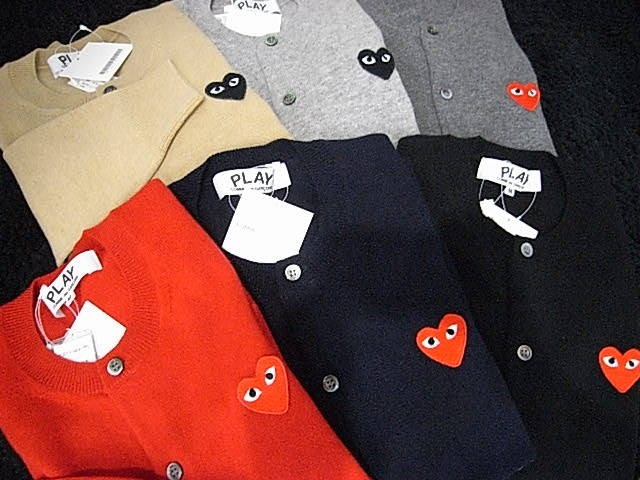Most designers chase beauty. Rei Kawakubo destroyed it.
Then she rebuilt fashion on her own terms.
You only have to enter any Comme des Garcons outlet and you will sense it- something has changed. The dresses are not flattering in a traditional sense. They challenge, provoke, pose embarrassing questions about the reasons why we dress in a certain way.
This Japanese designer has worked as the most influential designer in the world of fashion during the course of more than 5 decades. When other designers were busy following the fashion and the business growth, Kawakabo was trying to attain something even more indefinite pure artistic vision. She was not just a clothing producer. She essentially changed the way we perceive fashion as it can be.
The Mysterious Woman Behind the Vision
This is what is so interesting about Rei Kawakubo: she does not interview much. She does not describe her collections. She does not defend her decisions and turns her vision into cheesy soundbites.
Kawakubo was born in Tokyo in 1942, and it was a chaotic period of war. The post-war Japan would influence her sensibilities of aesthetics in a manner that she has never clearly expressed in detail- perhaps that is deliberate.
She didn’t study fashion. Her Keio University degree was in fine arts and literature. This unconventional way turned out to be her biggest strength. She never had rules to break without having formal fashion training.
| Detail | Information |
| Birth Year | 1942, Tokyo, Japan |
| Education | Keio University (Fine Arts & Literature) |
| Founded Comme des Garçons | 1969 |
| Paris Debut | 1981 |
| Partner | Adrian Joffe (CEO of CDG) |
| Major Recognition | 2017 Met Gala Exhibition |
She began in the advertising industry of a textile company. After that, she resorted to magazine styling. These teachings made her learn about visual communication, the skills that were going to be invaluable.
She started Comme des Garcons in 1969. In French, the name translates to like boys, but she has never clearly told how the decision was made. Others see it as an observation of gender norms. Deliberate ambiguity is viewed by others. And it is not likely that Kawakubo would want it any different.
The 1981 Paris Invasion That Shocked the World
In 1981, when Rei Kawakubo presented her first Paris collection, the reaction was visceral. Those against it referred to it as the Hiroshima chic. They referred to her attire as being destroyed and post-apocalyptic. It was not only the Western fashion establishment, which predominantly happens to be white did not like her work; they felt threatened.
Her models used to walk in black oversized clothes with holes that can be seen, rags, ragged edges, and cuts. The fashion world, which prized color and ornamentation and figure-flattering forms and was overtly lavish, was missing.
However, to refer to it as destroyed clothes was off the point. Kawakubo was breaking down fashion without a cause. She was challenging some of the most basic ideas about what constitutes desirable clothing.
Why does fashion have to focus on the female body? Who has made it that symmetry is beauty? Why would luxury have to be blatantly opulent?
She shared the same season with fellow Japanese designer Yohji Yamamoto. They combined their efforts into offering a different vision that did not ascribe to the Western beauty standards. It was the first occasion when clothes were designed in Paris, keeping the male gaze as the secondary factor.
Initially, the critics who had not appreciated them slowly started to see that they had experienced something historical. The black color became the most sophisticated color in fashion in a matter of a few years. Deconstruction was made legitimate. Asymmetry was artistically credible.
Kawakubo had changed the paradigm permanently.
The Collections That Redefined Fashion
Certain Kawakubo collections didn’t just make fashion history—they redefined what fashion history could include.
Spring/Summer 1997: “Body Meets Dress, Dress Meets Body”
This show was also referred to as the lumps and bumps collection, and it traumatized fashion critics.
Gingham dresses styled with protrusions of an unnatural kind were worn out by models. These were not shoulder pads or shaped sections in areas that could be identified. Shoulders, backs, and hips protruded, fabric evidently disfiguring the human body.
The Western fashion press referred to it as ugly. They said it was unwearable. Their doubting question was whether Kawakubo was sane.
But it was a very deep question she had posed: Why, then, must fashion focus on the ideal body? What if clothing made completely new physiques of the body? What could we do to cease perceiving the female form as something to improve, but rather as a canvas on which to apply abstract sculpture?
These pieces are currently in museums as revolutionary statements of form and femininity. What was outrageous in 1997 now seems prescient.
Breaking Every Fashion Rule
Kawakubo is not only influential in individual collections. She has deconstructed the working assumptions of fashion:
Traditional Rule: Fashion must be flattering to the body. Kawakubo Response: Fashion must question our ideas of bodies.
Conventional Rule: Clothing must possess distinct gender categories. Kawakubo Response: Gender in Clothing represents a Social Construct that should be broken.
Conventional Rule: Luxury must have a costly appearance. Kawakubo Reaction: Luxury is a matter of intellectuality and creative imagination.
Conventional Decree: Designers are to develop commercial collections that are viable in the market.t Kawakubo Response: Commercialism defiles the purity of art.
Her approach can be best summarized by the infamous hole sweater that was popular in the early 1980s. The holes that were intentionally made in all parts of the garment contradicted the fact that the key role of clothing is to cover the body. It posed: What do you think of negative space being as important as fabric?
Dover Street Market: Retail as Art Installation
In the year 2004, Kawakubo launched Dover Street Market in London together with her business associate and husband, Adrian Joffe.
She was not into traditional luxury retail. Designer boutiques were sterile and threatening. She desired the opposite of that.
Dover Street Market is a retailer that is an ever-changing art installation that happens to sell clothes. The design changes every six months. Designers have the freedom to go creative in their spaces. Famous brands have the same square space as new celebrities.
What makes Dover Street Market revolutionary:
- Spaces that are inspirational and not based on the maximization of sales.
- Blending old and new, institutional and creative.
- Turning retail into culture, not just a transaction.
- Building a community based on creativity in design.
- Not to divide art and fashion, and commerce into different subsets.
There are now locations in Tokyo, New York, Singapore, Los Angeles, ND Beijing. Both of them keep the intention of Kawakubo and fit in the local context.
The Business Paradox
The following is the paradox of Kawakubo’s career: being unwilling to compromise in her work of art, she created a commercially successful empire.
The majority of designers follow the fashion in the market. They study sales data. They make designs according to the orders of the retailers. Kawakubo does none of this.
She herself builds what she desires. If it sells, fine. If it doesn’t, that’s also fine. Such a hard-line strategy ought to have resulted in commercial failure.
It has instead made an unbelievably faithful fan base that believes in her vision. Customers do not purchase Comme des Garcons because it is fashionable or nice-fitting. They purchase it because Kawakubo is making them reconsider the way clothes and identity are.
The reported annual revenues are said to be more than 280 million dollars, but the privately owned company does not publish in-depth financials. Considering that it is a brand that does not commercially give in, that is unprecedented.
The 2017 Met Gala: Institutional Recognition
Major retrospectives are not usually mounted in the Metropolitan Museum of Art until a designer has passed away. Fashion, however, is not too commercial to be taken seriously in the institutions of art.
In 2017, they broke precedent.
The exhibition Rei Kawakubo/Comme des Garcons: Art of the In-Between was the second occasion that the Met gave a solo designer. The former was in 1983 by Yves Saint Laurent.
The exhibition explored her career through thematic groupings: Absence/Presence, Design/Not Design, Fashion/Anti-Fashion, Model/Multiple, High/Low, Self/Other, Object/Subject, Clothes/Not Clothes.
This was one of the most popular exhibitions in the museum, attended by more than 430,000 people. It was hailed by critics as a long-overdue appreciation of the artistic value of Kawakubo.
The official confirmation of the knowledge of fashion experts over decades confirmed it: the work of Kawakubo should be placed in art museums, as it is not just an outfit but an art piece.
Gender and the Rejection of the Male Gaze
Kawakubo never identified herself as a feminist. She doesn’t discuss politics. She does not accept ideological categories.
But her work can be considered one of the most feminist statements in fashion.
Western fashion design was male pleasure-driven for centuries. Dresses were focused on breasts, tight waistlines, and bare legs. Women also worked against patriarchal beauty standards even in designing for women.
Kawakubo rejected all of it.
Her garments do not highlight the bust or the waist. They do not strategically expose legs and shoulders. They are proactive against the male gaze demands.
This is not about lessening the attractiveness of women. It is all about freeing fashion from the fact that female clothes are merely brought about to be consumed by males.
The question of her designs is. What should women wear as part of being intellectually fulfilled? What will happen when the clothing is between identity and artistic expression instead of sex appeal?
Why She Matters Now More Than Ever
The vision presented by Kawakubo is even more essential in the context of fashion in 2025, dominated by the influence of culture and Instagram aesthetics.
She is a symbol of the antithesis of all modern fashion has turned out to be.
She is seeking classical artistic integrity where most other brands are chasing viral moments. When other people learn from analytics, she relies on instinct. Where accessibility is becoming an important factor in the industry, she is kept aloof in mystery.
The example of Kawakubo is needed by young designers who are under pressure to design commercially viable and Instagram-friendly collections. She demonstrated that creative compromise should be avoided when one wants to establish a successful business.
The Enduring Revolution
Rei Kawakubo has not only transformed fashion, but she broadened the definition of fashion.
She demonstrated that clothing might be conceptual art. Rei Kawakubo proved that creative compromise is not necessary to make it commercially successful. She demonstrated that it was even beautiful to question beauty standards.
But perhaps the best thing she did was much more fundamental: she was an unremittingly individual over half a century.
She disregarded trends that were the order of the day in an industry. Rei Kawakubo remained silent in a culture where people had to explain. She created art instead of creating pretty clothes in a world that expected her to do so.
The woman who demolished traditional beauty did not simply recreate the fashion, but she demonstrated to us that destruction can be the most inventive thing of all.









